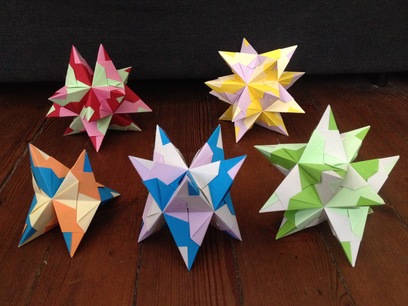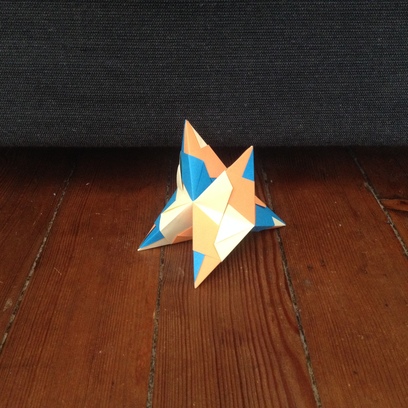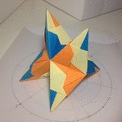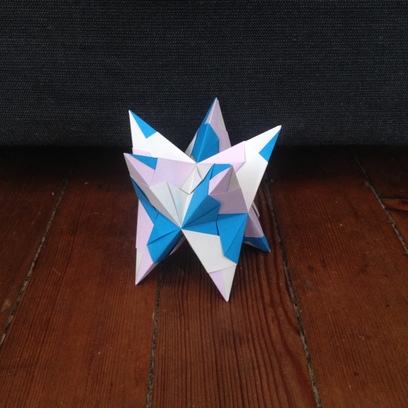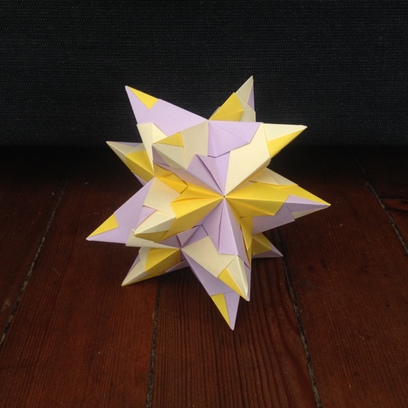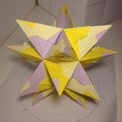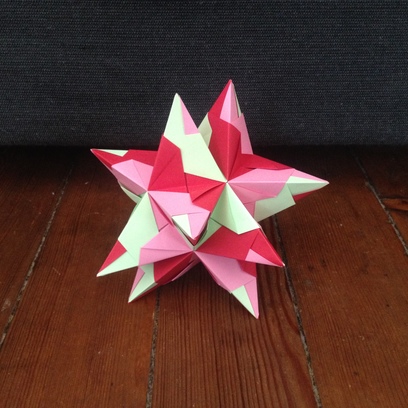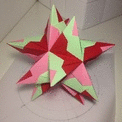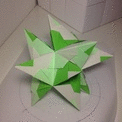Origami part 4 : Johnson Deltahedra
Created on August 22, 2018. Last update on January 2, 2019.
Quite a long time later after making the rhombic polyhedra, I stumbled upon a book on mathematics the title of which I don’t remember. This book was addressing different types of maths jokes (and they were funny), some trivia math anecdotes (funny too), a story about a math professor and an applied mathematician answering the question of some student about what learning math is for/about (interesting and opposite views) and an introduction (yes, I read books backwards) on how to explain what a math theorem is to a commoner. This last part took the example of polyhedra and the theorem presented there states that there exists only 8 convex deltahedron: the 3 platonics solids and 5 others. These 5 others are the ones I did not know about at all and the main focus of this section. They are the triangular bipyramid (J12), the pentagonal bipyramid (J13), the gyroelongated square bipyramid (J17), the triaugmented triangular prism (J51) and the snub disphenoid (J84). They all belong to the same family: the Johnson solids [1] that amount to 92 different polyhedra in total (which explains the J#).
Coloring
The graph coloring of these 5 deltahedra is straightforward and not so difficult manually. The key is to start at the bottom of the graph. The minimal coloring number to color the edges of a face differently is 3 since all faces are triangles, see Table 1. I think some alternate colorings are possible.
Finding the right color design was more cumbersome as I did not want to make something too close to the color arrangements I had already made. J12 is "Sunny beach", J13 is "Levels of blue", J17 is "Sunny sky", J51 is... hum... weird... but I like it, maybe "Opposite 2" and J84 is "Levels of green".
| Solid name | #edges/modules | #colors for a face |
|---|---|---|
| Triangular Bipyramid J12 | 9 | 3 |
| Pentagonal Bipyramid J13 | 15 | 3 |
| Gyroelongated Square Bipyramid J17 | 24 | 3 |
| Triaugmented Triangular Prism J51 | 21 | 3 |
| Snub Disphenoid J84 | 18 | 3 |
Gallery
References
[1] George W. Hart. Johnson solids. http://www.georgehart.com/virtual-_polyhedra/johnson-_info.html. Accessed on 08-23-2018.
